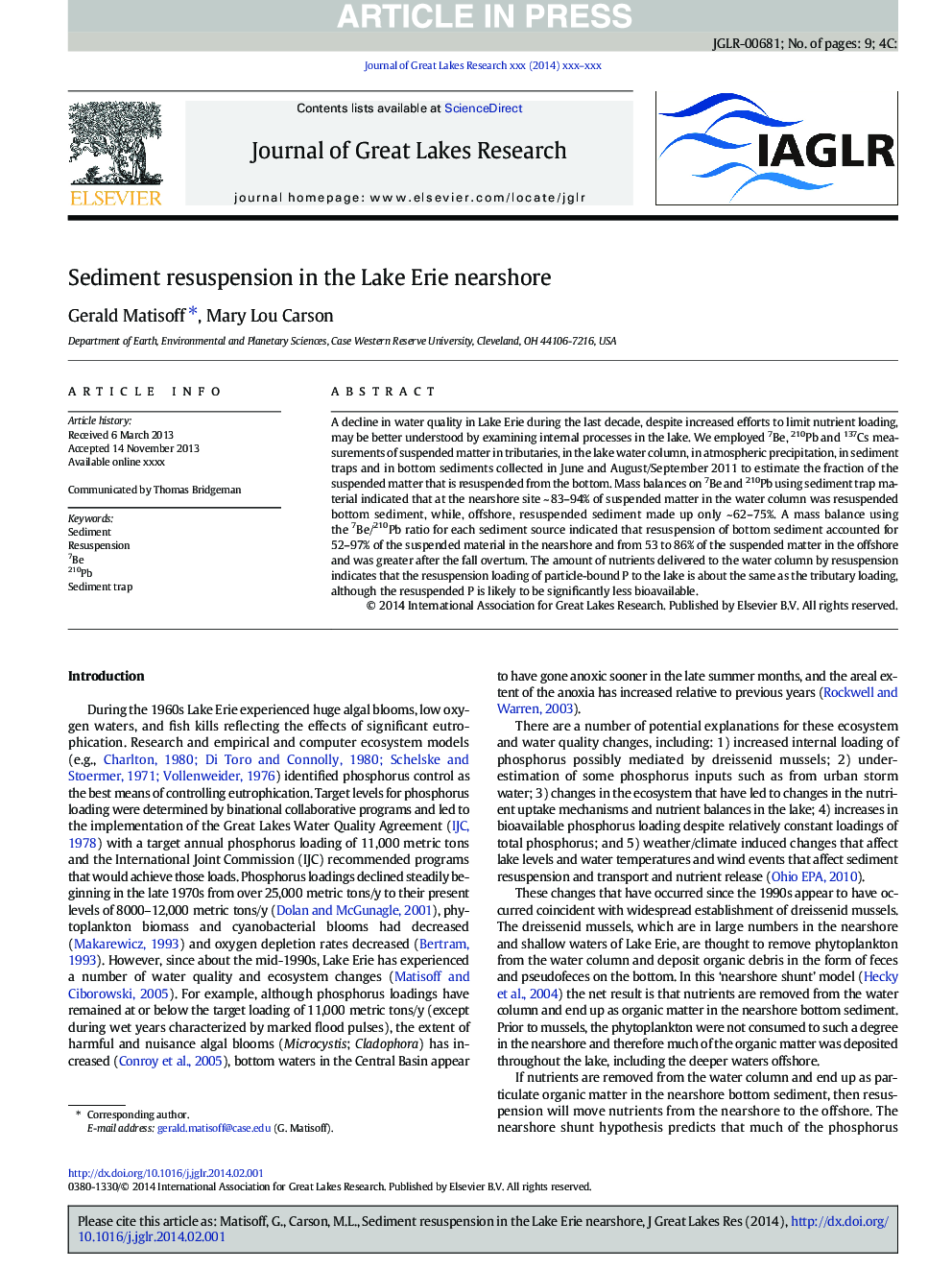| Article ID | Journal | Published Year | Pages | File Type |
|---|---|---|---|---|
| 6305267 | Journal of Great Lakes Research | 2014 | 9 Pages |
Abstract
A decline in water quality in Lake Erie during the last decade, despite increased efforts to limit nutrient loading, may be better understood by examining internal processes in the lake. We employed 7Be, 210Pb and 137Cs measurements of suspended matter in tributaries, in the lake water column, in atmospheric precipitation, in sediment traps and in bottom sediments collected in June and August/September 2011 to estimate the fraction of the suspended matter that is resuspended from the bottom. Mass balances on 7Be and 210Pb using sediment trap material indicated that at the nearshore site ~Â 83-94% of suspended matter in the water column was resuspended bottom sediment, while, offshore, resuspended sediment made up only ~Â 62-75%. A mass balance using the 7Be/210Pb ratio for each sediment source indicated that resuspension of bottom sediment accounted for 52-97% of the suspended material in the nearshore and from 53 to 86% of the suspended matter in the offshore and was greater after the fall overturn. The amount of nutrients delivered to the water column by resuspension indicates that the resuspension loading of particle-bound P to the lake is about the same as the tributary loading, although the resuspended P is likely to be significantly less bioavailable.
Related Topics
Physical Sciences and Engineering
Earth and Planetary Sciences
Earth and Planetary Sciences (General)
Authors
Gerald Matisoff, Mary Lou Carson,
